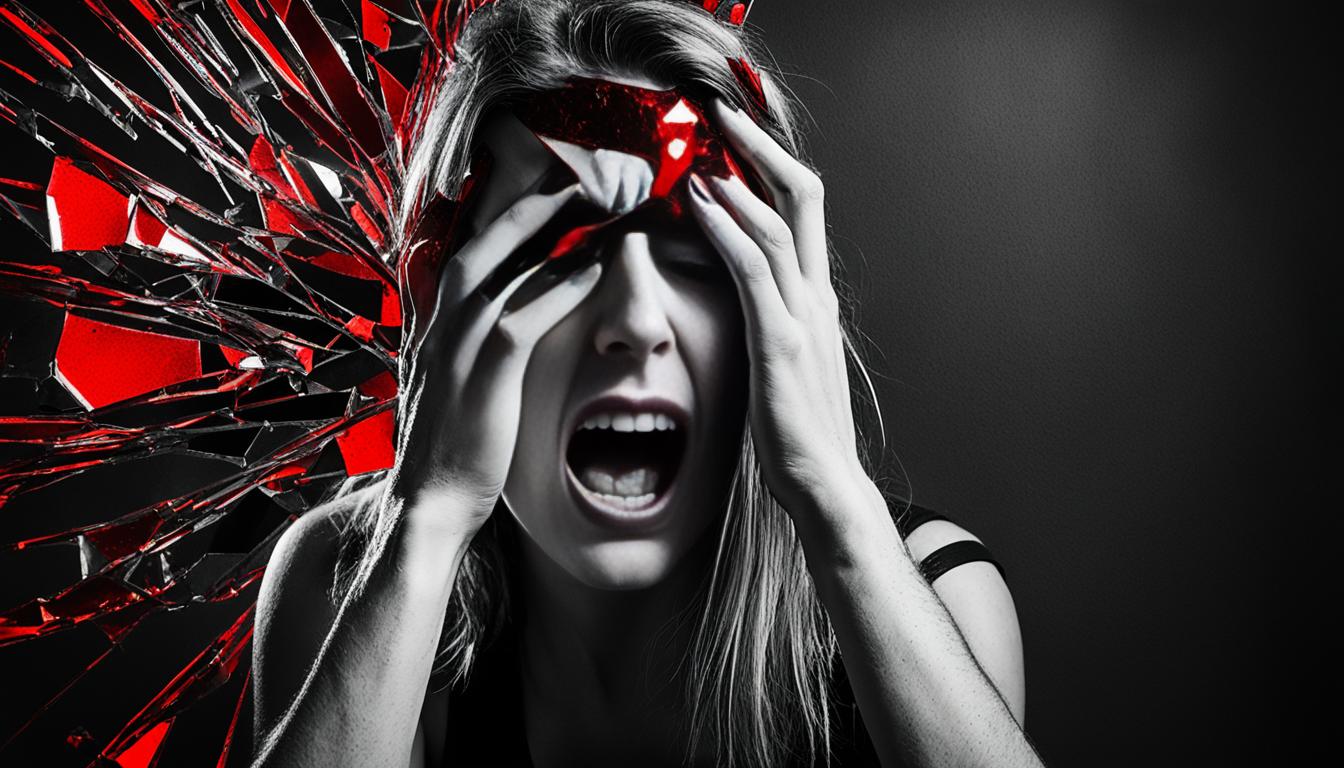Self-injury, known as cutting or self-harm, is common among teenagers, especially girls. It includes actions like scratching or cutting the skin, burning, picking at wounds, or hitting oneself. People might think it’s a way to try to end their life, but often it’s a coping mechanism to handle emotional pain. However, self-injury is not safe. It can cause serious injuries and infections.
Parents and caregivers should watch out for signs of self-injury. This includes noticing strange scars, wounds that don’t heal, or sudden changes in behavior. Getting help quickly and seeking professional advice is very important to stop this behavior.
Key Takeaways:
- Self-injury is common, especially among teenage girls.
- For many, it’s a way to deal with emotional pain.
- It’s not a safe behavior and can lead to severe injuries and infections.
- Family and friends should be aware of potential signs.
- Swift action and getting professional help can make a difference.
Understanding Self-Injury and Its Triggers
Self-injury is also known as cutting or self-harm and can be confusing. It might seem strange to hurt oneself on purpose. But, those who do it are usually dealing with tough emotions that lead them to this behavior.
People might start self-harming to cope with deep emotional pain. If they can’t find relief through normal ways, self-harm lets them feel alive again. It allows them to escape the numbness by feeling something, even if it’s pain.
Self-injury can be a way to show others what they’re going through when talking isn’t helping. It’s like a silent scream that tries to explain the pain inside.
But, self-injury is not a good way to deal with problems. It only gives a short break from the hurt, making things worse in the long run. It becomes a harmful habit as people keep going back to it for comfort.
Many things can trigger someone to self-harm, like feeling left out or criticized. Also, seeing photos or videos of self-harm can lead some to believe it’s an okay coping method.
Common Triggers for Self-Injury
| Emotional Triggers | Social Triggers | External Influences |
|---|---|---|
| Feelings of rejection | Being left out | Exposure to self-harming content |
| Emotional pain | Criticism | |
| Loneliness |
It’s key to understand what leads someone to self-harm. Solving these problems and showing better coping ways can help them stop.
Next, we will look at how to spot self-harm and why getting help right away is so important for those who need it.
Recognizing the Signs and Seeking Help
It’s very important for parents and caregivers to spot the signs of self-injury early. Knowing these signs helps them act quickly to help those in need. Look for these common signs:
- Talking about self-injury
- Suspicious scars or wounds that worsen or don’t heal
- Cuts in the same place repeatedly
- Increased isolation and avoiding social activities
- Collecting sharp tools
If these signs appear, don’t ignore them. Fast action and professional help are necessary for recovery.
Help comes in many forms. Treatments like dialectical behavior therapy (DBT) and cognitive-behavioral therapy (CBT) are highly advised. They help manage emotional problems and teach better ways to cope.
Sometimes, doctors might also recommend medication. This is for any other conditions that could be linked to the self-harming.
Getting the family involved can make a big difference too. Family therapy helps tackle issues at home. It supports the person in a way that can lead to successful recovery.
Treatment Options for Self-Injury
| Treatment Option | Description |
|---|---|
| Psychological Treatment (DBT, CBT) | Therapy sessions to address emotional distress and develop healthier coping strategies. |
| Medication | Prescribed to manage co-existing conditions that may contribute to self-harming behavior. |
| Family Therapy | Involves the family in the recovery process, addressing underlying issues at home. |
Conclusion
Self-injury is a complex behavior needing support and understanding. Recovering involves dealing with emotional distress and finding healthy ways to cope. It’s very important for those who self-harm to get help early. This stops the problem from getting worse and jump-starts their recovery journey.
Cognitive-behavioral therapy (CBT) and dialectical behavior therapy (DBT) are effective for many. But, new therapies, like stem cell therapy, are showing up. These might deal with the reasons behind self-harm better.
Families and caregivers play a big role for those battling self-injury. They must provide a safe and caring home. This means pushing for help and finding support together. With the right mix of professional help, new therapies, and strong support, people can beat self-injury.

